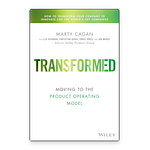"Buffett's Early Investments" (2024) by Brett Gardner takes us behind the scenes of Warren Buffett's earliest and most formative investments—the ones that helped build his first millions and shaped his legendary investment philosophy. While everyone knows about Buffett's modern-day investments that move markets, this book explores how he built his foundation when he was just another investor trying to figure things out.
The Real Warren Buffett Effect
When Buffett revealed his $1 billion stake in Apple in 2016, the market responded immediately—Apple's stock jumped 3.7% the very next day despite the company struggling with a 14% decline that year. By 2022, that modest position had grown into 887 million shares worth over $150 billion, becoming one of history's most profitable investments.
Today, Buffett's investments create almost a self-fulfilling prophecy: when he buys, others follow, and success becomes nearly guaranteed. But the true investment lessons aren't in his celebrity-status moves—they're in what he accomplished before his name alone could move markets.
Let's explore five of Buffett's earliest investments to uncover the real Buffett playbook:
1951: Greif Bros. (The Wooden Barrel Company)
Imagine being 21 years old and convincing your father's investment firm to buy stock in a wooden barrel manufacturer—an industry already in decline in 1951. That's exactly what Buffett did with Greif Bros.
What did young Buffett see that others missed? A classic "net-net" opportunity—what he would later call a "cigar butt investment." Like finding a discarded cigar butt with one free puff left, Greif Bros. was trading below its liquidation value.
The numbers told the story:
Net current asset value: $20.47 per share
Tangible book value: $39.60 per share
Market price: Just $18.25 per share
Buffett recognized significant physical assets (239 manufacturing plants and 11 divisional offices), plus inventory that would likely hold value over time. The company also used LIFO accounting, which typically understated inventory value—meaning the true asset value was probably even higher.
The fascinating epilogue? Unlike many "cigar butt" investments that eventually disappear, Greif didn't go under. They transformed into a leader in industrial packaging solutions with a $3.4 billion market cap by 2023—proving Buffett's early instinct for finding adaptable businesses with durable advantages.











